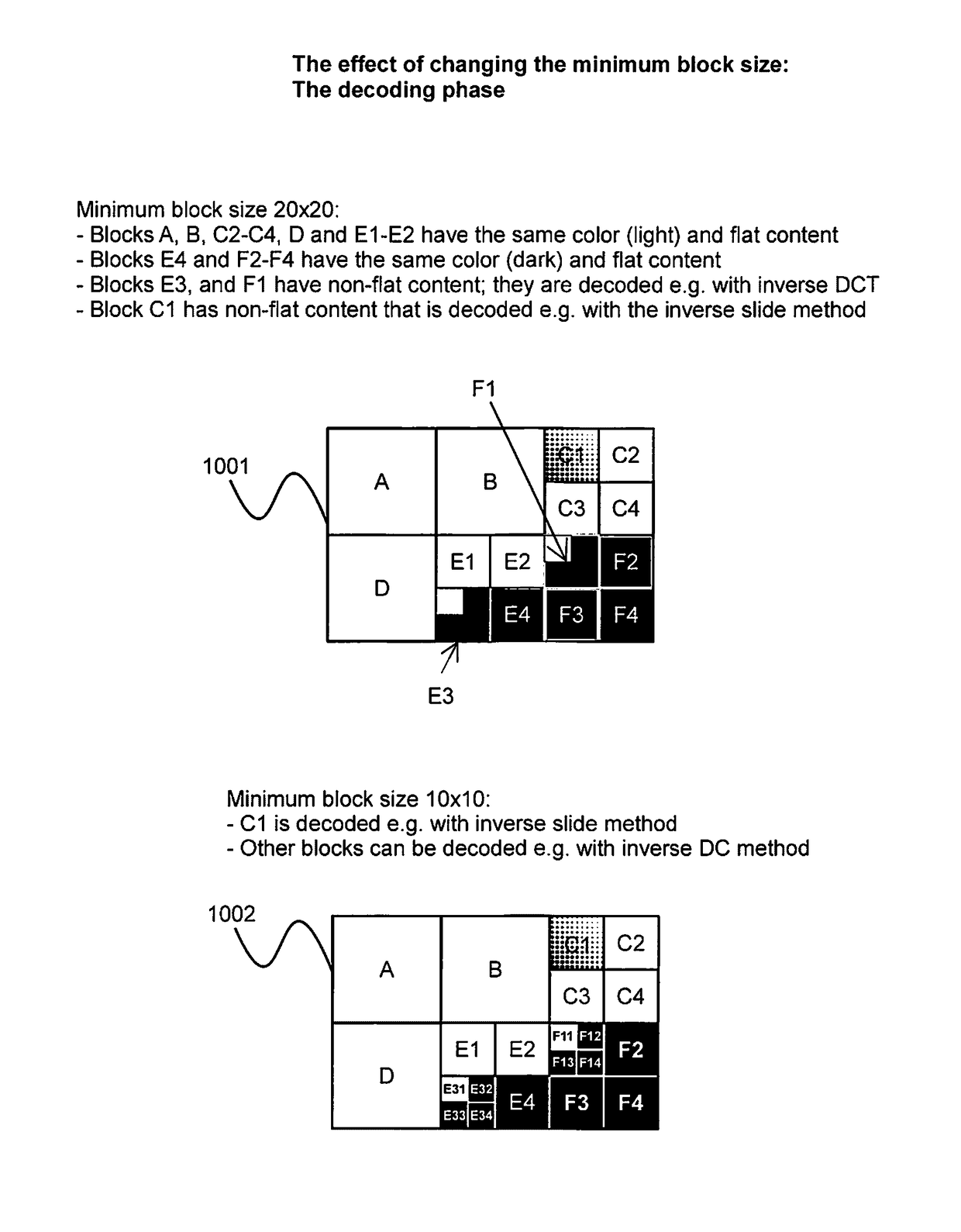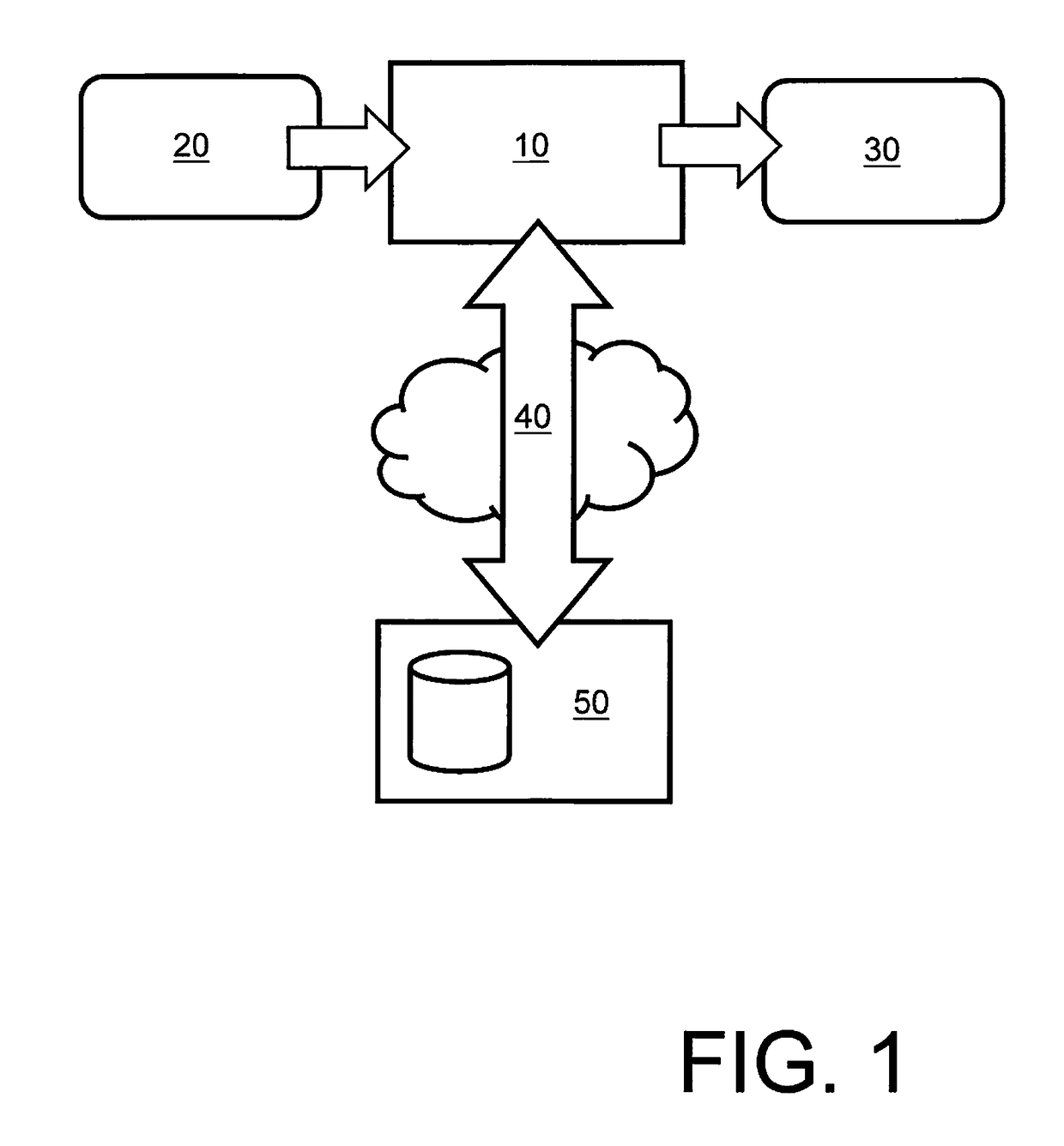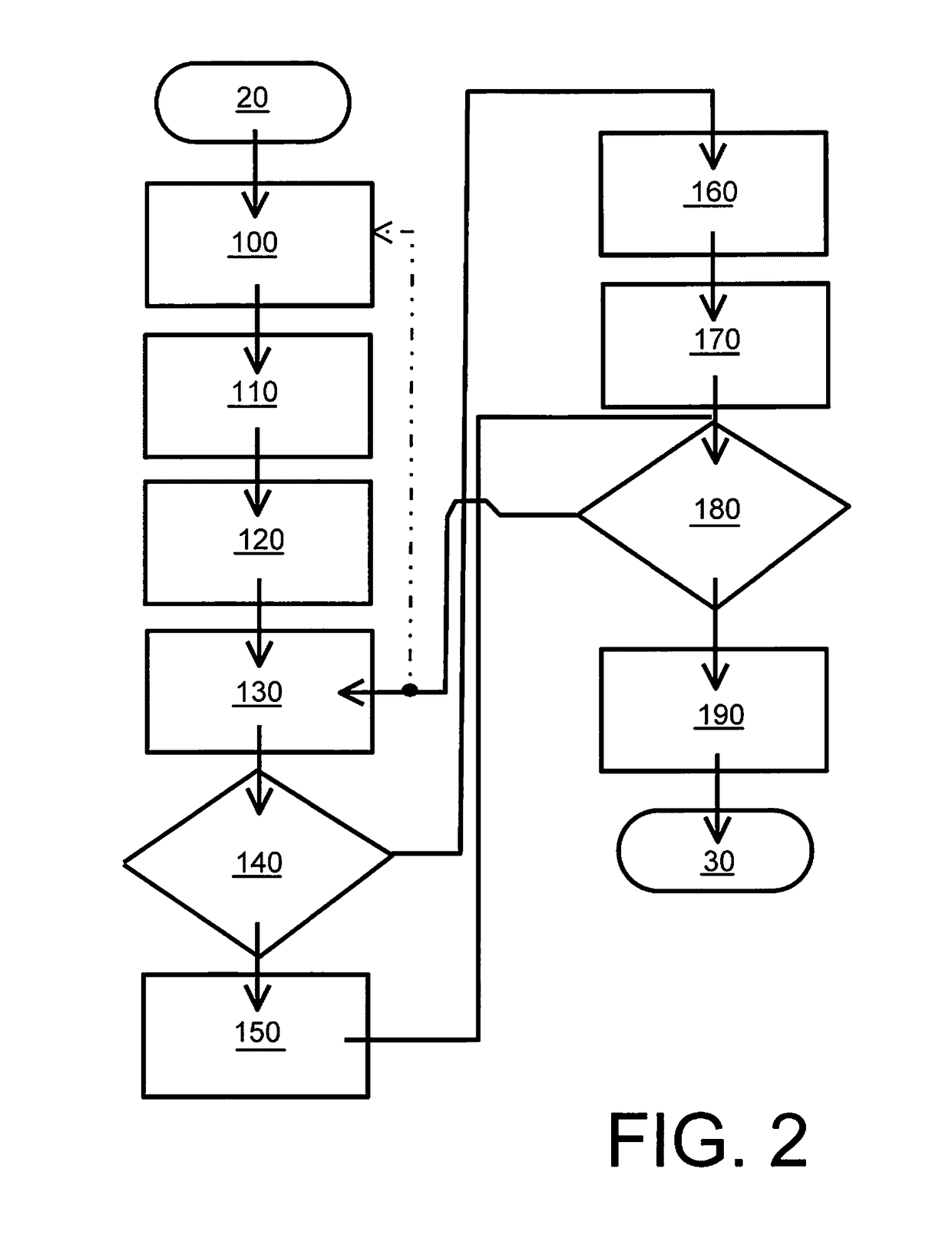Decoder and method
- Summary
- Abstract
- Description
- Claims
- Application Information
AI Technical Summary
Benefits of technology
Problems solved by technology
Method used
Image
Examples
an example
[0155]Simplified example of decoding an encoded image is described below. Based on this embodiment the decoder receives information content from a given encoder (for example as streamed or as file). According to example the information content is in a form of file consisting of following information fields and content:
[0156]Imagesize: 120×80 pixels
[0157]InitialBlocksize: 40×40 pixels
[0158]SplitBit: 0 0 1 0000 0 1 0010 0000 1 1000 0000
[0159]MethodBits: 0 0 1 0 0 0 0 0 0 0 0 0 0 0 0 0 0 0 0 0 0
[0160]Values: 10 10 20 25 15 20 10 10 10 10 10 10 5 10 5 5 5 5 5 5 10 5 5 5
[0161]Where:
[0162]Imagesize describes the size of the image to be decoded. The size of the image can be arbitrary; however, in this specific example it is 120×80 pixels which means that the initial block size is 40×40 because there are 3×2 blocks in the grid in the entire image. InitialBlocksize describes what is a size of “basic” initial blocks. Depending on the implementation the InitialBlocksize can be fixed (such as 4...
PUM
 Login to View More
Login to View More Abstract
Description
Claims
Application Information
 Login to View More
Login to View More - R&D
- Intellectual Property
- Life Sciences
- Materials
- Tech Scout
- Unparalleled Data Quality
- Higher Quality Content
- 60% Fewer Hallucinations
Browse by: Latest US Patents, China's latest patents, Technical Efficacy Thesaurus, Application Domain, Technology Topic, Popular Technical Reports.
© 2025 PatSnap. All rights reserved.Legal|Privacy policy|Modern Slavery Act Transparency Statement|Sitemap|About US| Contact US: help@patsnap.com



